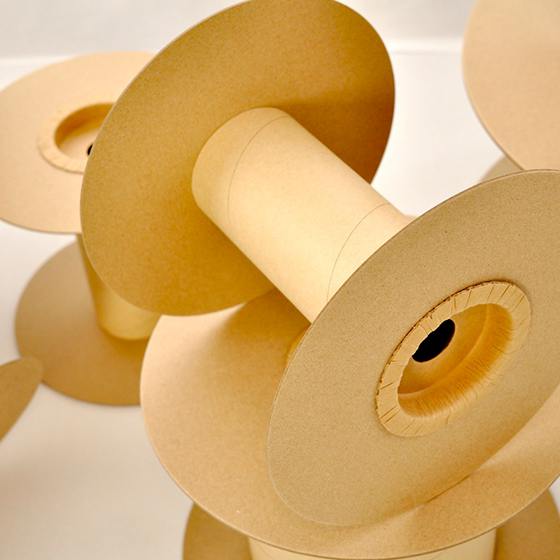Project Report For Paper Bobbin
Introduction
Project report for Paper Bobbin is as follows.
Paper bobbins are made up of many layers of paper or paperboard that are wrapped together to make robust, hollow, and often cylindrical structures. Adhesives are used to laminate or glue the paper layers together. The bobbins’ wall thickness varies based on the number of layers wrapped during production.
Paper bobbins are also known as paper cores, paperboard bobbins, paper cans, fibre drums, fibre bobbins, paper tubing, wrapped bobbins, composite cans, and cardboard bobbins. The name “cardboard bobbins” is a misnomer, despite its widespread use. The middle layer of corrugated cardboard is made up of three kraft layers.
Paper bobbins are also known as paper cores, paperboard bobbins, paper cans, fibre drums, fibre bobbins, paper tubing, wrapped bobbins, composite cans, and cardboard bobbins. The name “cardboard bobbins” is a misnomer, despite its widespread use. The middle layer of corrugated cardboard is made up of three kraft layers. Wound plies of paper or paperboard are used to make paper bobbins, paper cores, and other related items. One, two, or more plies of brown kraft paper or paperboard can be used to make paper bobbins or cores.
Get Completely Custom Bankable Project Report
The liner, which is the innermost layer, and the wrap, which is the outermost layer, can be made of various materials (foil, film, etc.) or specialist paper. Water resistance, images or labelling, or a certain colour can all be provided by speciality paper and materials.
Spiral wounds and convolute or parallel wound paper bobbins are the two primary forms of paper bobbin and cores. Convolute wound bobbins are employed where strong bend strength, crush resistance, and dynamic strength are required.
The paper ply or plies on a spiral wound bobbin are wrapped around at an angle to the bobbin’s axis. The outer two edges of the paper strip are wrapped parallel or at a 90-degree angle to the bobbin’s axis in a convolute bobbin.

The innovation provides details on how bobbin paper is made. Producing pulp, using nets to dehydrate and shape it, squeezing it, drying it, performing calendering, and rolling paper are all steps in the process.
In the step for producing the pulp, finished pulp x made of waste pulp residues of bobbin paper, and finished pulp y made of waste paperboards are mixed together for the purpose of getting pulp, weigh the ingredients 18-40:82-60. Grinding, heating, and impurity removal are additional steps in the production of the finished pulp x. On the basis of the method for producing the bobbin paper, the invention further discloses a system for producing the bobbin paper.
The system and process have the advantage that the finished pulp is made from waste paperboards and the finished pulp obtained after the waste pulp residues are treated is proportionally the basic pulp for the bobbin paper was created by combining the two materials. As a result, the waste pulp residues can be converted into wealth and the cost of making bobbin paper can be decreased. The manufactured bobbin paper is also strong and has a strong interlayer binding force.
Market Potential Of Paper Bobbin
According to a report by Research and Markets, the paper bobbin market in India was valued at Rs. 743.9 million (US$10.3 million) in 2020 and is expected to reach Rs. 1,195.5 million (US$16.5 million) by 2025, growing at a CAGR of 9.9% during the forecast period.
Expenses

Product Cost Breakup

Reveneue Vs Expenses

Market Trend

Paper bobbins are widely used in the textile industry for winding yarn, thread, and other materials. They are made from recycled paper and are an eco-friendly alternative to plastic bobbins. The market size of paper bobbins in India has been steadily increasing over the years, driven by the growth of the textile industry.
The growth of the textile industry in India has been a major driver for the paper bobbin market. India is the world’s second-largest producer of textiles and the industry is a significant contributor to the country’s economy. With the increasing demand for textiles, there has been a corresponding increase in the demand for paper bobbins.
Another factor contributing to the growth of the paper bobbin market in India is the government’s focus on sustainability and environmental protection. The Indian government has introduced various policies and initiatives to promote eco-friendly practices and reduce the use of plastic. As a result, many textile companies are switching to paper bobbins as a sustainable alternative to plastic bobbins.
The paper bobbin market in India is also highly competitive, with many players offering a wide range of products. Some of the major players in the market include Emkay Engineering Works, Shreeji Industries, Nagpal Industries, and Sumeet Industries.

